#patrick o’malley
Explore tagged Tumblr posts
Text




Posting this just now but that next GHOS cards I completed are from Delicious: Hopes and Fears.
What’s next? Amber’s Airline? Primrose Lake? Well… I’ll just have to wait for the next card packs in the GHOS App.
#delicious#delicious emily#heart’s medicine#hopes and fears#delicious hopes and fears#delicious emily’s hopes and fears#emily o’malley#patrick o’malley#paige o’malley#allison heart#cards#card complete#ghos app#gamehouse#gamehouse original stories#snuggford stories
10 notes
·
View notes
Text










Sharpe + Text Posts (Part 19)
#back in Flanders baby#Sharpe#just when you thought I was done with these hehe#Richard Sharpe#text post#text#teresa Moreno#Ramona harper#Patrick harper#Wellington#arthur wellesley#Sean bean#daragh O’Malley#assumpta serna#Hugh Fraser#perioddramaedit#napoleonic wars#Diana Perez
203 notes
·
View notes
Text

#grey's anatomy#season 3#mark sloan#eric dane#derek shepherd#patrick dempsey#sara ramirez#callie torres#alex karev#justin chambers#ellen pompeo#meredith grey#tr knight#george omalley#george o’malley#izzie stevens#katherine heigl#james pickens jr#richard webber#chandra wilson#miranda bailey#addison montgomery#kate walsh#sandra oh#cristina yang#isaiah washington#preston burke
57 notes
·
View notes
Text

23 notes
·
View notes
Text
Love this!



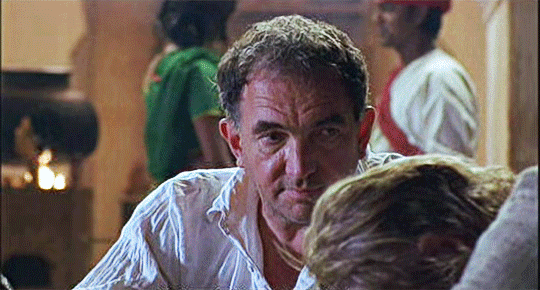


I'm beat. Never been so beat.
Sharpe's Challenge (2007)- Cut Scene
176 notes
·
View notes
Text

current list of journalists who signed this letter:
Caspar Salmon
Sophie Monks Kaufman
Hannah Strong
Hanna Flint
Amon Warmann
Swara Salih
Clarisse Loughrey
Sarah Cook
Katie Smith-Wong
Christina Newland
Kelechi Ehenulo
Helen O’Hara
Leila Latif
Kambole Campbell
Josh Slater-Williams
Savina Petkova
Caitlin Quinlan
Shaheena U
Iana Murray
Ellen E Jones
Charles Bramesco
Juan Barquin
Jourdain Searles
Flavia Dima
Tariq Ra’ouf
Tim Robey
Ellis Lamai
Edward Hong
John Nugent
Patrick Sproull
Kayleigh Donaldson
Callie Petch
Justine Smith
Lillian Crawford
Douglas Greenwood
Kelli Weston
Glenn Kenny
Luke Hicks
Josh Spiegel
Scott Tobias
Matthew Morlai Kamara
Laura Venning
Hugo Emmerzael
Vikram Murthi
Wendy Ide
Brandon Streussnig
Jason Bailey
Jake Cole
Kimber Myers
Lauren Lola
Maryam Ahmad
Isaac Feldberg
Patrick Heidmann
Catherine Bray
Manuela Lazić
Tom Beasley
Charlie Shackleton
Rory O’Connor
Stephen A. Russell
Tom Huddleston
George Fenwick
Leslie Byron Pitt
Max Borg
Leonardo Goi
Jill Vranken
Scott Davis
Sarah Bradbury
Charlie Brigden
Matthew Turner
Linda Marric
Paul Devine
Kat Brown
Ryan Lambie
Freda Cooper
Jordan King
Sean Wilson
Mel Campbell
Jaime Rebanal
Jenna Mahale
Alistair Ryder
Jesse Hassenger
Mike McCahill
Sean Gilman
Jude Blay Yawson
Alex Milan Durie
Jon Lyus
Clint Worthington
Sean T. Collins
Brianna Zigler
Steph Green
Theo Rollason
Soraya Nadia McDonald
Steven Nguyen Scaife
Billie Walker
Jacob Stolworthy
Robert Daniels
Reuben Baron
Scott Renshaw
Jason Adams
Katie Kasperson
Oscar Goff
David Jenkins
Scott Dagostino
Rory Doherty
Jeremy Smith
Federica Battiato
Marya E. Gates
William Goodman
Debopriyaa Dutta
Devin Meenan
Quinn Bilodeau
Jennie Kermode
Sandy Schaefer
David Daut
Courtney Enlow
Sheila O’Malley
Steven Sloss
Andrew F. Pierce
Brian Tallerico
Katherine Rife
Jordan Maison
Anam Abbas
Andy Greene
Lindsey Romain
Fatima Sheriff
Erin Musset
Lex Briscuso
Joel Robinson
Angelica Jade Bastién
Carmen Paddock
Mark Asch
Johanna Griesé
BJ Colangelo
Billie Melissa
Rendy Jones
Vince Mancini
Jannat Suleman
Sabina Stent
Dana Stevens
Daniella Shreir
Ziyad Saadi
Travis Johnson
Cameron Ward
Saffron Maeve
Edward Frumkin
Tommaso Tocci
Lieven Trio
Ben Rosenstock
Yasmine Kandil
Dennis Tracy
Patrick Cremona
Mattie Lucas
Richard Fink
Danielle Ryan
Fiona Underhill
Jessica Scott
Heather Wilson
Keith Phipps
Jaime N. Christley
Ian Wang
Maria Lattila
David Daut
Hannah Wales
Rose Dymock
Nadira Begum
Amelia Emberwing
Erik Anderson
Matt Cipolla
Kyle Turner
David Willoughby
Pepe Ruiloba
Arjun Persaud
Ricardo Gallegos Ramos
Akash Saran
Rebecca Sayce
Clem Bastow
Briony Kidd
Sarah Manvel
90 notes
·
View notes
Text
Winter/Christmas Multi Bot Release!🌲









* ˚✧ / Art Donaldson & Patrick Zweig / Gingerbread Houses
* ˚✧ / Derek Shepherd / Ice Fishing
* ˚✧ / Jack O’Malley / Practical
* ˚✧ / Santana Lopez / Mrs. Claus
* ˚✧ / Tashi Duncan / Ice Skating (Req.)
* ˚✧ / Winston Schmidt / Christmas Date
as promised, here's the first of my winter/Christmas themed bots!! i am hoping to work on others/more throughout the month, but wanted to get these out since it is December 1st!
no the jack o'malley bot isn't technically anything to do with the holiday spirit, but i saw red one and had to make a bot of him because... chris evans.
anyway, thank you all again for the support and love; it is soooo appreciated and i am very thankful <33
#challengers 2024#challengers movie#challengers#new girl#winston schmidt#art donaldson#tashi duncan#patrick zweig challengers#patrick zweig#glee#christmas#winter#derek shepherd#greys anatomy#red one#chris evans#santana lopez#tashi duncan x you#tashi challengers
68 notes
·
View notes
Text
Golden Knights' St. Patrick’s Conversion

Polo-Drone-055, entered O’Malley’s Pub as the lively sounds of St. Patrick’s Day celebrations filled the air. The establishment, a last vestige of old traditions, was packed with men clad in green, raising their glasses in joyous toasts. The scent of stout and fried fare wafted through the dimly lit room, but PDU-055’s mission was clear—tonight, the Golden Knights would welcome new members.
Clad in festive attire—its usual black rubber polo uniform exchanged for a gleaming green rubber one adorned with a gold shamrock—PDU-055 moved with calculated precision, carrying a stack of emerald-green jerseys emblazoned with shimmering gold shamrocks. Each jersey pulsed faintly, infused with the transformative energy of the Golden Knights’ order.
“Brothers,” PDU-055 announced, his voice smooth and commanding, “tonight, we celebrate tradition and unity. Accept these jerseys and become one with the true champions.”

The revelers, emboldened by drink and festive spirit, laughed and clapped as they eagerly reached for the gifts. One by one, they pulled the jerseys over their shoulders. As soon as the fabric touched their skin, a golden glow rippled outward and their clothes underwent a remarkable metamorphosis. Their pants and jeans melted into shimmering, metallic gold shorts that gleamed under the warm pub lights. Their ordinary socks shifted into vibrant emerald-green knee-highs, perfectly matching their new jerseys. The once-simple shirts transformed into tight-fitting, radiant green jerseys adorned with golden shamrocks and hearts, their fabric glistening as if woven from pure energy. Every detail radiated an aura of power and unity, marking them as true Golden Knights.

The pub soon became a radiant haven of gold and green, with the newly transformed Golden Knights raising ornate goblets filled with shimmering golden ale. Their laughter rang out in perfect harmony, their every movement precise and synchronized.
The walls of O’Malley’s shifted, reshaping into golden panels that reflected the light of the glowing shamrocks on each knight’s breastplate.
One man, Patrick O’Shea, hesitated as he watched his friends morph before him. “What is this?” he stammered, his grip on the jersey faltering.
PDU-055 stepped forward, placing a firm hand on Patrick’s shoulder. “It is destiny,” he assured him. “No longer will you merely celebrate champions—you will become one. The Golden Knights welcome you.”
Patrick, drawn in by the brilliance of his newly transformed brethren, slipped the jersey over his head.

A final flash of golden light filled the pub, and where once stood a room of ordinary men, now stood the newest recruits of the Golden Knights—united, obedient, and glorious in green and gold with their gold shamrocks gleaming in the light.
Outside, the neon sign of O’Malley’s flickered and changed. Now, it bore a new name: The Golden Haven.

The transformation was complete. The mission of Polo-Drone-055 would continue as it sought our more St. Patrick’s Day revelers to convert.
Come join the team by messaging @brodygold @polo-drone-001 or @goldenherc9
#golden army#goldenarmy#golden team#thegoldenteam#ai generated#jockification#male tf#male transformation#hypnotised#hypnotized#soccer tf#gold#join the golden team#golden opportunities#golden brotherhood#polo drone#polodrone#pdu#polo drone hive#rubber polo#rubberdrone#join the polo drones#assimilation#conversion
31 notes
·
View notes
Text



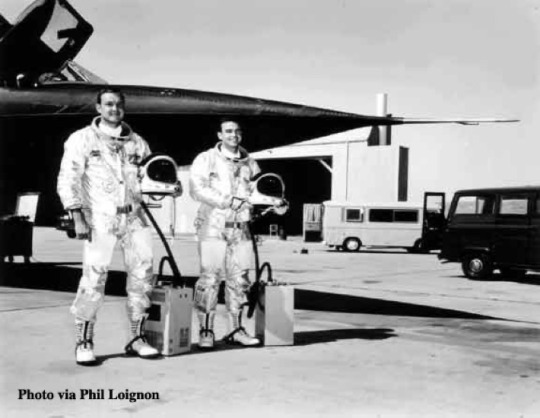
Deputy Secretary of Defense, Cyrus Vance tersely directed Strategic Air Command headquarters that the training phase of the SR 71 wing was over.
He directed the “senior crown” to cover Vietnam and to establish a location Kadena Air Base on the island of Okinawa.
By the time the 9th SRW was ready for Operational Deployment early in March 1968
Five SR 71s had crashed and were destroyed and tragically one test force RSO Jim Zwayer had perished over New Mexico.
The CIA’s A-12 at that same time in 1968 had three crewmembers dead and another five planes lost.
The aircraft that were selected to go operational were 978, 976, and 974. The deployment was scheduled for March 8, 10th and 12th. Three refueling operations were rescheduled for that six-hour and 18-minute flight plan.
Since they would travel faster than the earth rotates around its axis, they would essentially arrive two hours before their start!
However, in this case, they crossed the international dateline so these three SR 71s arrived one day later but two hours earlier on the clock. Wow!
On Monday, March 18, 0L-8 was ordered to fly its first operational mission.
It was an honor to be selected for the first mission it was pre-planned that Major Buddy Brown and Captain Dave Jensen have the honor. They were prepared to fly the first sortie with Lt Colonel Jerry O’Malley and Major Ed Payne as the backup crew.
Shortly after the airplane took off, there was confusion over what President Lynden Johnson said in his speech about the Vietnam War, and this first flight was changed immediately to a training flight, not an operational flight.
A few days later the order came to fly over enemy territory again. Buddy Brown and Dave Jensen were in the SR 71 ready to fly again when there was a technical problem. The mechanics worked on it and we were just about finished repairing the problem when Colonel Minter the operational officer put up a sign and showed it to O’Malley and said “You go”. Put up another sign for Brown and said “You stay”. As fate would have it. O’Malley and Payne also flew the second operational mission.
Buddy Brown was not upset about losing his chance to be first.
Perhaps he remembered the time when he was flying the U2 during the Cuba missile crisis in 1962. He was selected to fly a mission looking for Cuban nuclear missiles and could not due to weather so it was Rudy Anderson who took off from another area on the island of Cuba as backup.
It was Rudy Anderson, who was shot down and killed by the Cubans. My source is Velocity, speed with Direction, the professional career of General Jerome O’Malley written by Al Casey and Patrick Casey
Linda Sheffield
@Habubrats71 via X
#sr 71#sr71#sr 71 blackbird#aircraft#usaf#lockheed aviation#skunkworks#aviation#mach3+#habu#reconnaissance#cold war aircraft
19 notes
·
View notes
Text
☘️St. Patrick's Day - The HIVE, a perfect machine (part 1)
The Golden Army announced !
"We found a pot of gold….it means beer, Irish folk dances and lots of fun for St. Patrick’s Day ".
As usual the Hive, had taken it upon themselves to plan an unforgettable St. Patrick’s Day bash for the Golden bros. DC-009 commands: "Drones, prepare a Gold and Drone Party!"
The drones around him immediately snapped into action, their movements synchronized as if they were part of a well-oiled machine. They had no need for a to-do list or a series of orders; the very mention of a task was enough to set their programming in motion:
Clear the space: @polo-drone-073 had a vision. In a corner of the Hive's communal area, a large space was cleared, making room for the pièce de résistance of the St. Patrick’s Day bash: a four-leaf clover-shaped armchair.

image by PDU-073
This wasn’t just any chair; it was a marvel of ergonomic design, with cushions as plush as a freshly mowed meadow and upholstery that shimmered like a pint of golden ale. The drones watched with curiosity as PDU-073 meticulously positioned it in the center, ensuring that every inch of the chair was perfectly aligned with the room's layout. The anticipation grew as they realized this chair was not just for decoration but for some unknown, yet surely enjoyable, purpose. 🔥
2. PDU-073, the meticulous planner, had foreseen that the Golden bros would require a continuous flow of beer throughout the night delivering cold, frothy pints

image by PDU-073
3. @danielgold-16 (PDU-016) organizes the security service. It ensures that all participants are meticulously searched outside.... and especially inside! 🔥💪

image by PDU-016
4. @polo-drone-055, known for its persuasive communication skills, took it upon itself to spread the word of the impending celebration. For the guys in the pub the call of rubber was irresistible.... even if in green.🔥☘️
5. @polo-drone-001 as always does things in big: the great parade leaves no escape to the spectators of the parade. They were about to find themselves in the middle of a celebration unlike any they had ever seen... 001’s mesmerizing gifts foreshadow a very, very crowded party .💥
Who knows if our old friends Alex and Michael know a thing...
...And what about PDU-039 ? What will the wildcard of the group have in mind? Known for his unorthodox ideas and unexpected twists, he will definitely have something special in his sleeve for the St. Patrick’s Day party.....🔥
Part 2
Do you want to join? Contact our recruiters: @brodygold , @goldenherc9 or @polo-drone-001.
#st patrick's day#GoldenArmy#Golden Team#theGoldenteam#AI generated#jockification#male TF#male transformation#hypnotized#hypnotised#soccer tf#Gold#Join the golden team#Golden Opportunities#Golden Brotherhood#PDU-073#Polo-Drone-073#Polo Drone#Polodrone#PDU#Polo Drone Hive#Rubber Polo#rubberdrone#Join the Polo Drones#assimilation#conversion#drone#dronification#mind control
14 notes
·
View notes
Text
Guess what, I just finished Delicious 18. This might be my new favorite now.



#delicious#delicious emily#delicious 18#cooking and romance#delicious cooking and romance#emily o’malley#patrick o’malley#paige o’malley#angela napoli#evelyn napoli#edward napoli#sharon stepford#grace stepford#francois truffaut#emilia o’malley#emmy#vito o’malley jr.#gamehouse#gamehouse original stories#snuggford stories
4 notes
·
View notes
Text

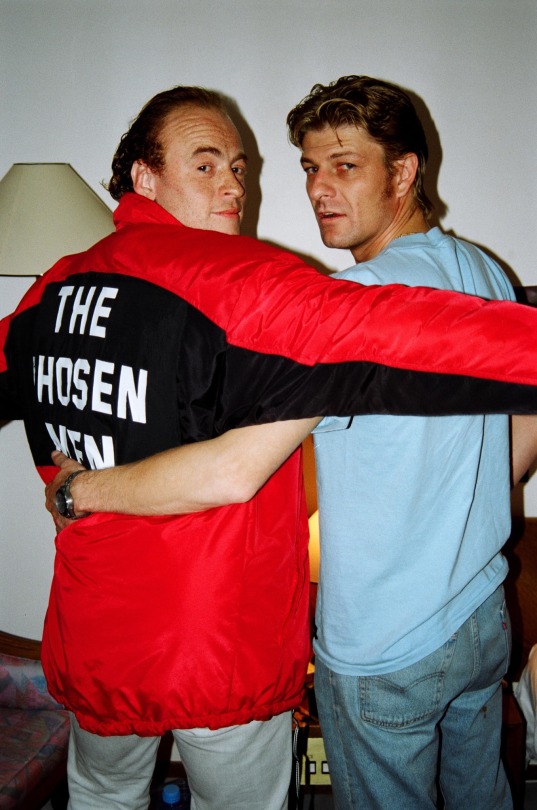
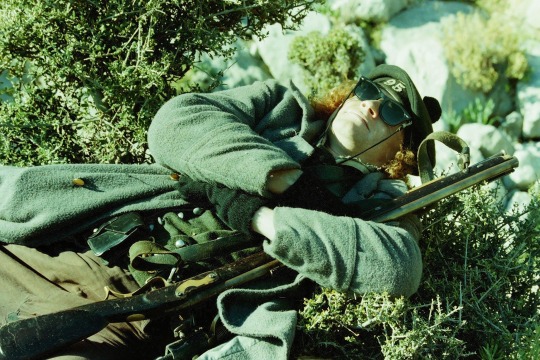
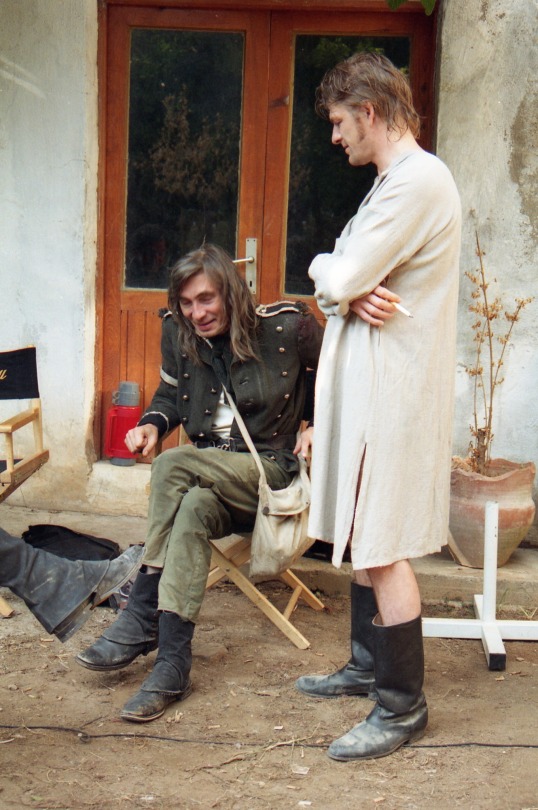




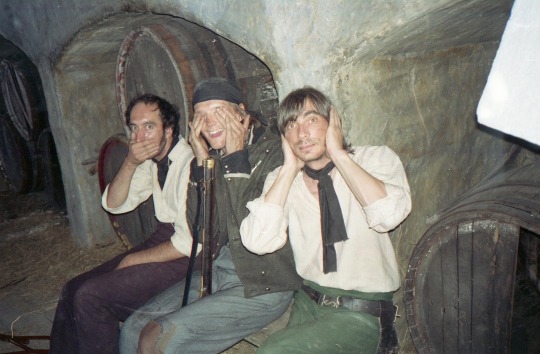
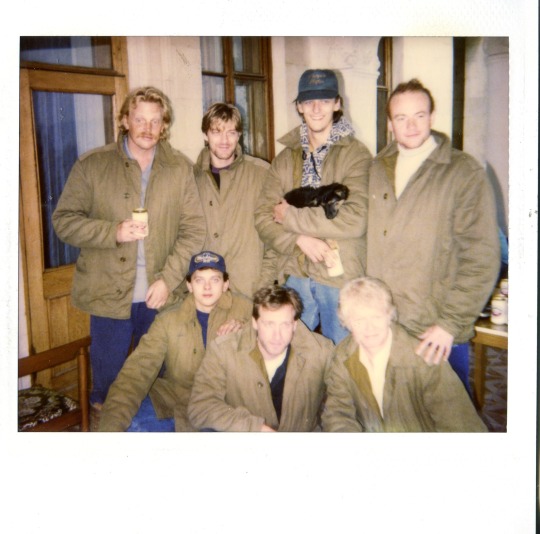
Did I just go through 300 IMDb photos? I might have done that, yes
#THEM#also the one with the soviet HAT I CANT#SHARPE#Richard Sharpe#Sean bean#rifleman Harris#Daniel hagman#John tams#Francis cooper#95th rifle company#patrick harper#darragh O’Malley#bts#Sharpe bts
131 notes
·
View notes
Text

#grey's anatomy#patrick dempsey#derek shepherd#meredith grey#ellen pompeo#sandra oh#cristina yang#chandra wilson#miranda bailey#richard webber#james pickens jr#george omalley#george o’malley#tr knight#izzie stevens#katherine heigl#isaiah washington#preston burke#justin chambers#alex karev#season 2
17 notes
·
View notes
Text




















On this day in 2010:
the cast of Glee attended the season 1 spring premiere party.
The event was held at the Chateau Marmont in West Hollywood, California, and was attended by Jenna Ushkowitz, Kevin McHale, Chris Colfer, Amber Riley, Cory Monteith, Lea Michele, Jonathan Groff, Naya Rivera, Dianna Agron, Heather Morris, Harry Shum Jr., Dijon Talton, Matthew Morrison, Jane Lynch, Jessalyn Gilsig, Iqbal Theba, Mike O’Malley, Romy Rosemont, Idina Menzel, Patrick Gallagher, Stephen Tobolowsky, and Josh Sussman.
10 notes
·
View notes
Text
At The End of a Warm Gun
Chapter Two - Bloody Noses Well-Earned
Close to O’Malley’s ranch, on the northern end where the green-yellow rolling hills split by a thin, lazy river where most of the local kids went to fish underneath the copse of bright-green catclaw trees. An old fisher’s shack, cock-eyed on its brick and wood foundation, acted as a bit of a get-away that all parents knew about but let the kids do what they wished with it. Where the school-mother and minister have set up a little reading nook, of which Alexandra and several others had taken to quite nicely. Even if she spent some time reading, most of her time was spent on Jacobson’s Rock.
Which was a giant boulder that jutted off the tallest hill just a short distance up the wagon-wheel jutted trail. At the top of the boulder was an ancient, gnarled oak tree where they used to hang criminals and wrong-does back before real law came to the county. There sat an old wooden cross at the edge of the ground and the rock, the painted-on words long faded to time many years ago.
This was where more of the older kids who were still too young for a job would spend a lot of time. Some of the boys would be down the hillside playing baseball or some other game, while other boys would challenge one another to climb to the top of the tree. Patrick Clarke had climbed into the tree this time, Alexandra gathered beside Sally Mae Stevenson and Maria Santos. All three covered in a faint layer of dirt and dust from the various games they had played since late in the morning. While a semi-circle of a half-dozen boys, three of them the Reynold boys—Joseph the oldest and most even-keel of them with Jackie as the middle child who always had something to prove, and Teddy seemed the most kind and caring of the three, especially toward animals, but wasn’t against egging on a situation when it wasn’t needed.
“Hey Pat!” Jackie called out as he attempted to start up the tree with the easy and obvious footholds. His sweat- and dirt-stained shirt tucked into his denim pants with its canvas patches to cover the numerous holes. “I can beat your ass to the top.”
Sally Mae tugged on the sleeve of Alexandra’s linen shirt. “Jackie’s going to bust his butt going up that tree.”
“He’s a fool,” Maria added, her tanned complexion had taken on a ruddy appearance from the sun that hung high above head. “Patrick at least has some type of coordination. Jack’s just going to fall and break his ass!”
A snicker ran through them. Joseph shouted up at his brother to come down, otherwise he’d whoop his butt, and he never said something he wouldn’t do. Which finally became enough for Jackie to stop, along with the fact he had no chance to actually beat Patrick in anything athletic. He was, after all, the most gifted physically of all the boys and a sight to look at for sure. Something that always caused Alexandra to bite her bottom lip and her heart to race when her eyes laid upon his shirtless form. Especially since Patrick hit a growth spurt over the last few months.
As the thirteen-year-old got to the higher branches of the ancient tree. Patrick seemed to hesitate when the narrower branches started to bend and bow just by trying to pull himself up. While the boys cheered him on, jeered Patrick when he hesitated, but egged him on. The girls, especially Alexandra, begged him to come down before he fell and broke something.
“Don’t be a bunch of sissies,” Jackie spat at the girls. “Who cares if he falls? He’ll be fine.”
“Don’t be an asshole,” Teddy said as he drove the point of his elbow into the stomach of his elder brother. “I’ll push you off next time you go up if’n you are going to be like that.”
Joe stepped between the boys, but it just redirected Jackie. Like always, that redirection turned towards the girls. The same three girls his anger seemed to always focus on. Since they were little, Jackie had a thing about picking on and mocking Maria. His words were cutting, sharper than a knife, which caused worse wounds than any physical attack.
Jackie’s smirk belayed a devious intent. “What are you even doing here?” Wasn’t a question, more of an accusation. “You and Alexandra aren’t even welcome here. This is a Texan tree in a Texan town. This ain’t Mexico.”
“Oh, go bite off, Jack,” Alex spat back. “Maria’s people came here three hundred years ago or so. While my mother comes from the mighty Aztecs. This land is as much ours as it is the actual tribes here more than your white ass.”
“God be damned, we took this beautiful country fair and square. Even if Maria can claim some blood ties. What about you?” Jackie took a step toward the girl, who was just a hair taller than her. “Neither from here nor Ireland, eh? Your dad’s probably already dead in the dirt out there. Watson Boys strung ‘em up! Then what is your wetback mother going to do?”
As the teen spoke, his brothers tried to stop them, but when they spotted Alexandra balling up her firsts, both brothers took a step back.
Jackie couldn’t help himself as he prodded Alexandra more and more. “Are you even a girl? I bet you’re faking it. You look like a boy. Do you even have a, uh, a-“
“Do you even know what girls have?” Sally Mae interrupted; hand cocked on her hip.
“S-shut up! Of course I do. I’ve kissed a girl before.”
“You mother doesn’t count,” Maria added in, emboldened by the diatribe.
This caused Jackie’s face to light up a bright red as all those gathered round laughed at the man.
“You bitch, spic-ass-“ Jackie was cut off by the fist of Alexandra connecting solidly with the bridge of his nose. Then another to his jaw, and before anyone could even react, he was piled in a heap.
Everyone stood aback and watched the scene unfold as Alexandra yelled and unloaded kicks to the boy’s back, legs, stomach until Joseph and Teddy grabbed her. She jerked back but was held in place by Patrick.
“Aye, girl, you got him and proved your point. Nary a thing else you need to do,” his voice calmed a bit of the rage inside of her.
Alex looked at the quivering teenager on the ground, who is being roundly mocked by his brothers while also being helped up. A stiff wind blew through the area, which caused the leaves above her head to dance and twirl. Everyone else disappeared for just the briefest of moments as Alexandra’s bronze skin lit up in a warm crimson.
“Thank you,” was all Alex could croak out before she turned on her heel and stomped back up the trail toward that old fisher’s cabin.
Where past a young mesquite, and under the heavy shade of a linden tree, sat Kelly his nose buried deep in The Small House at Allington. When Alexandra sat beside him, he asked, “what was all the commotion up there?”
“I adjusted Jackie,” Alex replied plainly. “Wish I could fix ‘em completely. At least his brothers aren’t pieces of shit.”
“He’s such a waster,” Kelly said but didn’t look up from the pages of his book.
As they sat there Alexandra watched as a single lonely cloud drifted on the azure sky above, much like what she imagined a giant ship on some distant ocean. The breeze would slow and stop occasionally, but it seemed to blow almost continuously. It brought with it the smell of the wild, earthy grass and of the herbs and wildflowers that dotted around the landscape.
Tears fought on the edges of her eyes to be released and flow down her cheeks, but she couldn’t do it. Just in case Jackie saw her, she didn’t care much what the others thought about her. Still, like mother told her, Alex stuffed her emotions back down, and the day returned to its usual routine.
By the time the sun started its descent toward the horizon, Kelly and Alexandra walked back to town. Down the dirt path, along the side with just the two of them. An occasional wagon or rider trotted by with smiles and questions if the pair wanted a ride back to town. Which Alex would always decline with a smile and a polite word.
“Can we stop for a moment?” Kelly asked as they crested over one last hill with the entirety of Dry Rock before them.
She looked at the town for a moment, once a tiny trading post, now had turned into a bustling little village. Which the incoming railroad tracks and station being built on the outskirts of town gave a promise of future prosperity. For a moment her thoughts drifted to her father, this was the life that he wanted to give both Kelly and herself, and by indirect extension, everyone else here. No longer a land of lawlessness, at least that’s the promise.
“Are you sure, Kelly? We’re almost back.” Alexandra just wanted to get back. A soft growling came from her stomach. “I’ll get you a sweet roll if you can just tough it out, okay?”
With a deep breath, Kelly nodded. “Okay, just this sun is something fierce today. The walk just tires me out.”
“I know. I’ll carry you if it gets too bad, okay?”
Kelly laughed. “You can’t lift me.”
“Want to place a bet on it?” Alexandra goaded her older brother, before she feinted a grab at him.
That forced Kelly to jump back before he laughed and ran off towards town. Which spurred on a good-natured game of tag. Where when Alexandra would get close, and often she would with her longer stride, and out of good sportsmanship she would let him get ahead of her and never truly being able to catch him. It was a good way to get him to move and push toward town. Alex was really hungry.
Dry Rock used to a small collection of wood houses and shacks that supplied settlers heading further out west as well as hunters and the few homesteads out on the prairies and plains of northwestern Texas and what is now the Oklahoma territory. Alexandra heard stories of the town back when it was formed, however, her experiences have been with the ever expanding and growing town. Where the ranchers and farmers had grown up around the town, and new homesteaders cropped up every other day.
With hard orange-red dirt pounded down flat from all the people who have walked, wagoned, and rode across it, the main road went down the middle of Dry Rock. Though not as large as buildings she had seen in artistic renditions and imagined when she read, yet she still loved walking by the tall two- and three-story buildings. From the general trader, Sally Mae’s father Gustav and her brothers ran the store, and the whole familiar lived on the third floor above the storage area. To the saloon, of which the pair of children headed off to for their delicious food, more specifically the little tartlets that Miss Julia baked every morning and sold throughout the day.
To the twelve-year-old’s eyes the saloon seemed the fanciest place that Alexandra could ever see. With the various paintings on the wall that depicted the beauty of the western frontier; from a scene of wild buffalo being chased by natives on horseback to some picturesque waterfall off in California so many days away. All hung and covered jade green wallpaper kept in the most meticulous of conditions. A player piano off in the corner played a tune seemingly at all hours. Though the place was nice, well-maintained, and upkept well, the patrons varied as much as those that came through Dry Rock.
When Kelly and Alexandra entered the Dust and Dirt Saloon, that familiar aroma of freshly-cooked food which intermingled with the persistent smell of alcohol that scrunched up Alex’s slightly-upturned nose, tinged with the perfumes of the various working women that called the saloon home. A rather well-dressed woman in a fine silken red dress trimmed with black sat at a large mahogany table with a cigarette between her full, pale red lips. Deep, dark blue eyes peered at Alexandra, and she couldn’t figure out if the older woman was sizing her up or looking at her as if she was a bug to be squashed. Madame Rose wielded power and influence with those who truly control the area, father said no one should get on her bad side. So, Alexandra gave the woman a warm smile, and it was returned in kind.
“Ah, the Sullivan children once again,” a large, bearded man with a sizable gut and more gray than brown in his facial hair said in a voice deeper than any water well yet warmer than the summer’s sun. “A couple of tarts?”
Kelly nodded far too enthusiastically, to the point that Alexandra wanted to laugh at him, but he didn’t deserve that. “Yes, please.”
“Two ciders, as well, sir,” Alexandra added as she pulled out a dime and two pennies.
“No, no,” the man said with a shake of his giant head. “It’s on me and the missus this time. What your father is doing? It’s a real service to Dry Rock and every other town, ranch, farmstead, what-have-you. A God-fearing man doing God’s work.”
“Thank you, Mr. Cooper.” Kelly climbed onto one of the bar stools, a large smile stuck to his face.
Once done with the buttery pastries and the slightly alcoholic cider, the two wished the man goodbye. As they needed to head home for whatever last chore mother might need done. That the sun which once hung high in the air, drifted about a third of the way toward the horizon. Casting ever-longer shadows like dark fingers that spread across Dry Rock.
“Shit,” Alex cursed as she quickened her pace toward home. “Mother ain’t going to be happy with us.”
Kelly shrugged his thin shoulders. “Probably, but we got free tarts, and Jackie got a broken nose. Mother will understand.”
A wry smile brightened Alexandra’s features. “I can’t wait to see him in the schoolhouse tomorrow. He’s going to be so pissed.”
This made her brother’s smile grow lazy. “I wish I could’ve seen that.”
#writeblr#writing community#creative writing#western#queer fiction#stories#chapter two#writers#authors#writers of tumblr#authors of tumblr
5 notes
·
View notes
Text
2 New HD Video Releases
Reefer Madness - 25th Anniversary LA Revival - August 30, 2024 - Los Angeles, CA
Cast: Thomas Dekker as Ralph Wiley, Bryan Daniel Porter as Lecturer/Jack, Rory O’Malley t/r Jesus, Anthony Norman as Jimmy Harper, Darcy Rose Byrnes as Mary Lane, Jane Papageorge u/s Mae Coleman, Patrick Ortiz, Claire Crause, Alex Tho, David Toshiro Crane, Natalie Holt McDonald
Notes: Decent HD Capture of this incredible immersive revival. One of J. Elaine Marcos’ last performances as Sally, the first video to capture Jane as Nicole, and the only video of Rory as Jesus. Shot from my iPhone at one of the tables in front so, a lot of scenes are very closeup, there are some obstructions here and there with some seats including a pole during some moments. Despite that, pretty much all the important action is captured in the show. Includes outdoor footage and a short post show speech done by original LA cast member Paul Nygro. A-
Screencaps: https://www.flickr.com/gp/141838001@N03/1929B2489D
Next to Normal - Ovation Theatre - February 9, 2024 - California
Cast: Lisa Ramos as Diana, Miles Barnum as Dan, Bri Deras as Natalie, Jesse Magdaleno as Gabe, Paddie Patterson as Henry, Chris Bradford as Dr. Fine
Notes: Great HD Capture of this emotional production of the show. The cast was very phenomenal. Some heads are in the way at some points but, it is mostly unobstructed. A
Screencaps: https://www.flickr.com/gp/141838001@N03/63i5H6VP7Q
Just like with my last release, I intend continuing the trade or buy options but, I changed it a little bit for this release. Below is how this release will work
$10 for each video, $20 for both
2:1 Trade for any of the videos
Once receiving any of the two videos or both, it is NFT until January 2, 2025 and it is NEVER TO BE SHARED ON ANY ONLINE STREAMING SITE
To inquire for any of the videos or for both, please contact me at [email protected], DM me on Discord, or DM on Tumblr (not sure if I’ll see message but, I’ll check)






6 notes
·
View notes